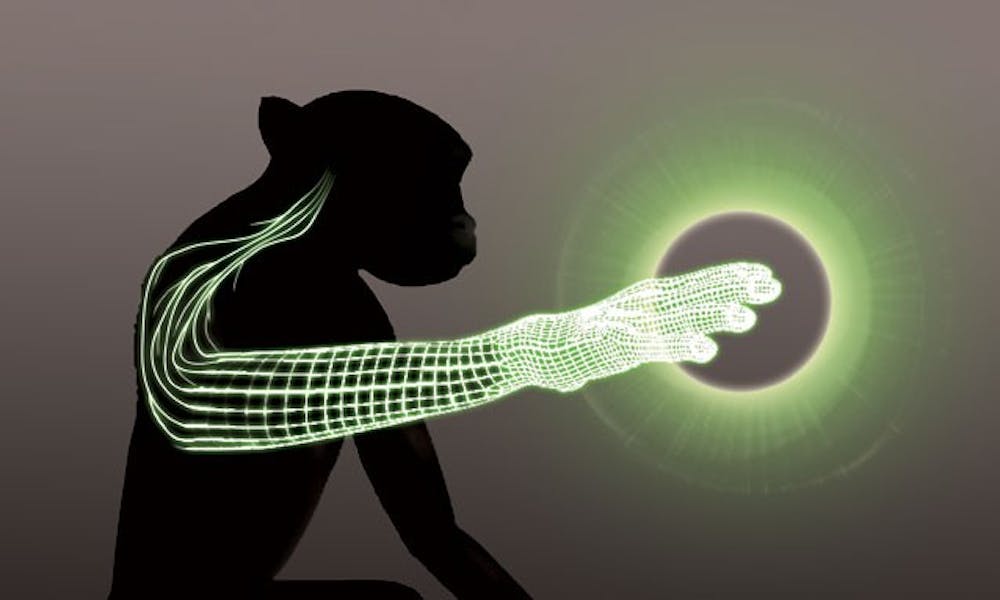A recent Duke study reveals the benefits of brain power.
In a study published Oct. 5 in Nature, two monkeys moved virtual avatars using their minds without physically moving their bodies. Researchers believe the results will lead to functional robotic exoskeletons—devices that utilize electrical stimulation to move paralyzed limbs—for humans. In the future, paralyzed patients may be able to use this technology to help them walk again.
“[The monkeys’] brain activity was similar to when they use their own hands to touch something,” said Miguel Nicolelis, co-director of the Duke University Center for Neuroengineering and lead researcher of the study. “They behaved like the avatar was their own arm, and when we touched their virtual arm, their brain cells responded as if we were touching their own arm.”
The exoskeleton vest contains motors, which are activated by a patient’s brain activity, Nicolelis said. The brain activity created when a patient thinks about moving is transmitted to these motors, which then tells the body to move its arms or legs.
Each time the avatar hand touched objects virtually, the monkeys sensed this touch physically from the exoskeleton they wore, Mikhail Lebedev, senior research scientist in neurobiology at Duke and co-author of the study, wrote in an email Saturday.
“This was the first study in which a user of a neuroprosthetic device—virtual avatar arm—not only moved the device by thinking... but also received artificial sensations from the device in the form of electrical pulses that were delivered to the sensory area of the brain,” Lebedev said.
This study introduces the possibility for an entire generation of sensory prosthetic arms, legs, exoskeletons and other devices, he added.
For example, this technology can be used for people with a prosthetic arm who want to be able to feel their arm without actually looking at it, said Eric Thomson, a postdoctoral researcher at Nicolelis’ lab and a researcher for the study.
“If we were to walk around without any sensory feedback, it would be pretty tough,” Thomson said. “We would be very, very clumsy—we would just fall.”
Thomson stressed the importance of the feedback loop between the brain and body in the success of a person learning to walk again.
“We think that they will learn much faster and really incorporate these exoskeletons into their body image if we actually have this feedback in the patient’s brain so that they literally... feel like they’re moving their own body,” Thomson said.
Thomson compared this process to learning to drive a car. Eventually, after driving for a long time, a person can drive automatically without consciously thinking about it, he said. With feedback from the speedometer or gas gauge, however, navigating would be much more intuitive, he said.
To move toward the goal of helping paralyzed patients, the next step in the research is to conduct clinical trials, Nicolelis said.
In the Walk Again Project, an international nonprofit group, a consortium of labs across the world will be working on building the most effective exoskeleton and studying the brain-exoskeleton interface in order to enable paraplegics to walk again, kick a soccer ball and participate in other physical activities, Thomson said.
Before transitioning to human trials, however, the team needs to ensure that all safeguards are in place, including keeping the test subjects safe, he added.
“Monkeys are precious, and we don’t do any frivolous surgeries or anything with the monkeys—we test it out before that,” Thomson said. “[But working with] humans is another quantum leap.”
Get The Chronicle straight to your inbox
Signup for our weekly newsletter. Cancel at any time.

